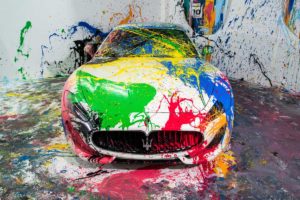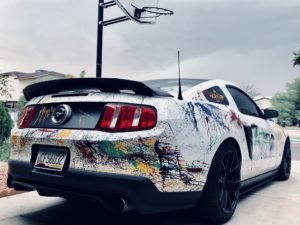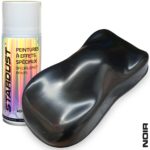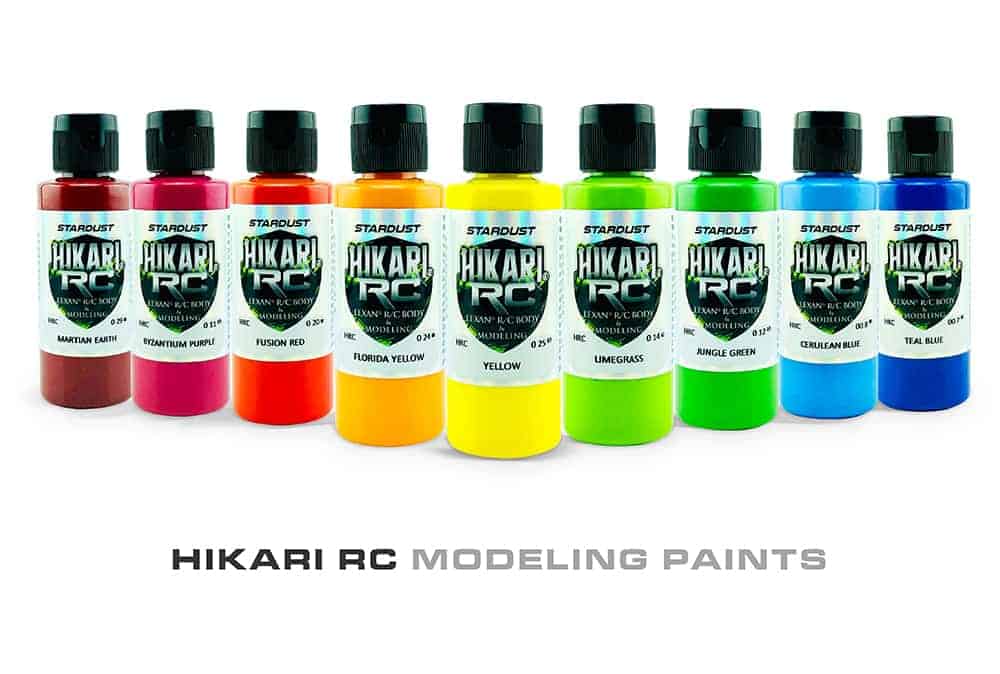Get a paint splatter on a body, fairing, or bike frame
The technique of splash painting is all the rage right now in all areas of decorative objects, and especially on bicycle frames.
We can of course decorate any object, piece of furniture, wall, or vehicle with splash paint style, on the condition of respecting 3 main steps, and using the right products that can be used to make your painting project a success. splashed style
So here is a tutorial for splashing paint on a bike, in 3 main steps. of course you could transpose these techniques to the vehicle or medium of choice.
In the case of a mural, we can do without the 3rd step, varnishing.
There are black primers for all types of materials (plastic, wood, bodywork, iron, aluminum, PVC, etc.)
Splash Effect Paint / Step 1 :
Start by preparing your support well and create the black background*
to create perfect grip conditions, sand the surface with 500 grit sandpaper then apply a black primer.
Mask with masking adhesive for bodywork, all areas to protect
Most of the time, we will work on an old background, that is to say an old paint, so in this case, no primer is necessary, we can therefore apply a black base paint here available in spray
Let dry for an hour, then sand with 500 grit
>>> Colors other than black can of course be used to create the background.
>>> Flying stencils can be used, to mask areas when splashing. It is also possible to use adhesive masking, in the form of a strip, which will not be removed after the splashes.
It may seem restrictive and useless to sand each time you do a step, however this is really necessary, and will prevent you from seeing your layers of paint peel off, dissociate after a few months or years, or simply continue. to a shock.
Splash Effect Paint / Step 2 :
The choice of colors is free, however it is not advisable to exceed 3 or 4 colors.
You can choose colors in the same range of tones, or opposite and complementary colors.
When painting a bodywork or a bicycle frame, it is necessary to use certain quality paints, and absolutely avoid using commercial acrylic paints, but on the contrary choose a professional product, which will allow us to varnish without fear of reactions.
There are 2 types of paint that can be used :
1/ high quality polyurethane acrylic paints, such as that of the Hikari RC 60ml range, which offers a 40 Bright Colors : These colorful paints have enough pigment load to cover the black background when splattering thin or thick
These paints have 2 advantages, in addition to their exceptional pigment strength :
•
They have no odor and are not harmful, so they can be used indoors, anywhere.
•
In addition, it perfectly supports all types of bodywork varnishes, which is not generally the case with water-based paints.
2/ Body paints in small 125ml format
They are more liquid, and particularly fine. They offer quick drying, and of course are compatible with all bodywork products.
If you use them on your black background, make sure that it is completely dry, to prevent them from melting under the effect of a thick layer of paint splashed on its surface.
Applying Splatter Paint :
dip small bits of paper into the color. You can use brushes, or anything else. Make sure to lightly remove excess paint, while keeping a good amount of material on your wick. Then splash the support with forceful movements
wick. Then splash the support with forceful movements
Take care to vary the directions, making random gestures, freely and without repeating the same Patterns. In order to have a natural result, do not attempt to regularly cover the surface, on the contrary, you will have better results by splattering the paint freely, or even with your eyes closed !
Drying :
if you have used water-based paints, then allow complete drying, that is to say at least 24 hours in a dry and temperate environment.
If you used solvent-based paints, you can varnish directly.
Splash Effect Paint / Step 3 :
The paintings of a bicycle frame or any other vehicle can be protected by a varnish.
This gives a nice even glossy look, and it will also level the surface by smoothing out the slight differences in thickness of the splattered paint, to give a “wet” finish as if the frame of the bike had just come from the factory.
Here is a professional varnish aerosol used for all body work
If you have applied fairly thick splashes of paint, and you want a perfect result, it will probably be necessary to varnish a second time the next day, after a light sanding. With 4 coats of varnish, i.e. coats applied every day, you will have a perfect finish !




